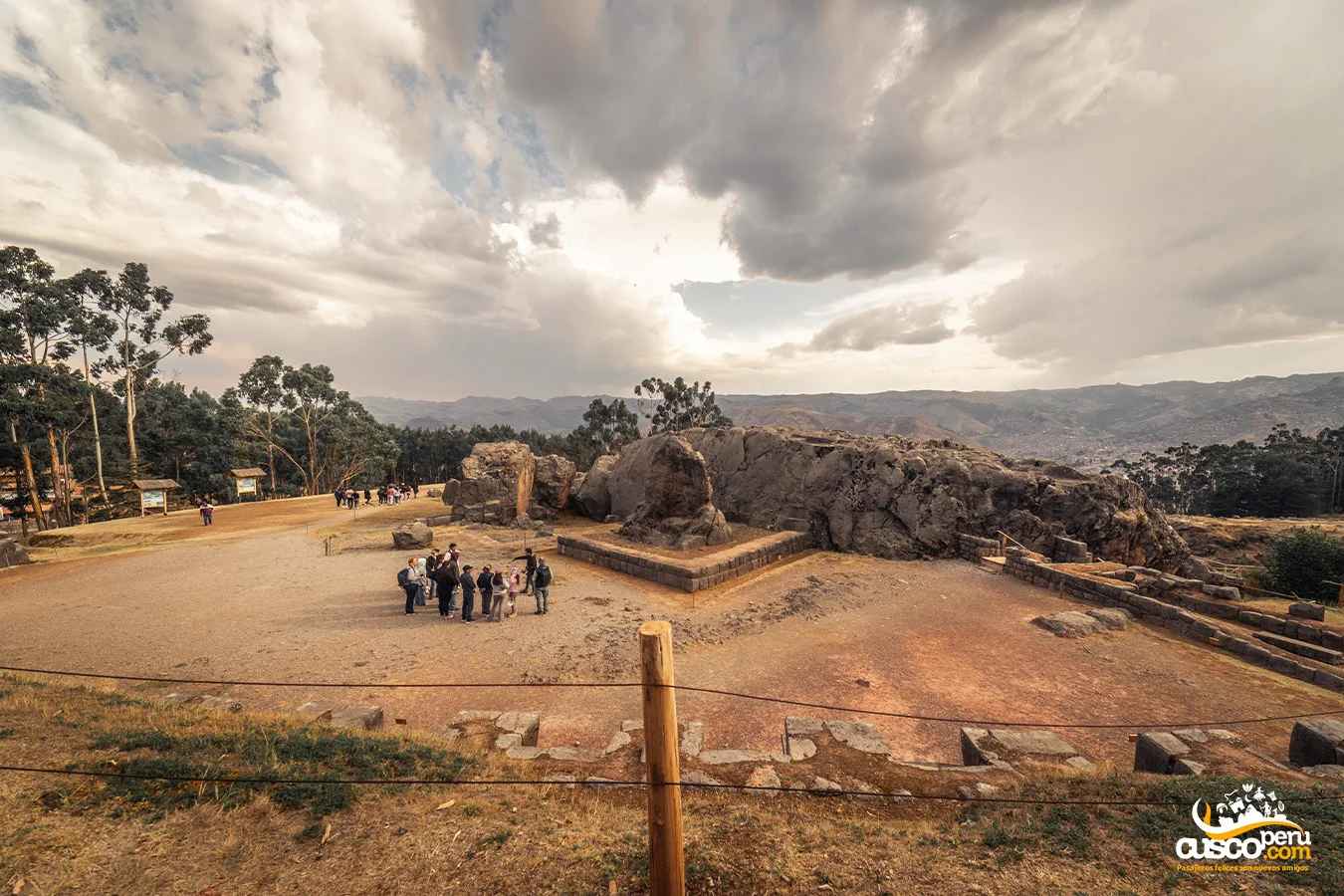
The archaeological complex of Q'enqo was an important Inca religious site, where ceremonies in honor of the major gods of the Inca culture were performed.
What remains today of the archaeological complex of Q'enqo are carved rocks that could not be destroyed by the Spaniards. Little remains of the paths and aqueducts, nor are the enclosures, the deposits, or the liturgical baths present.
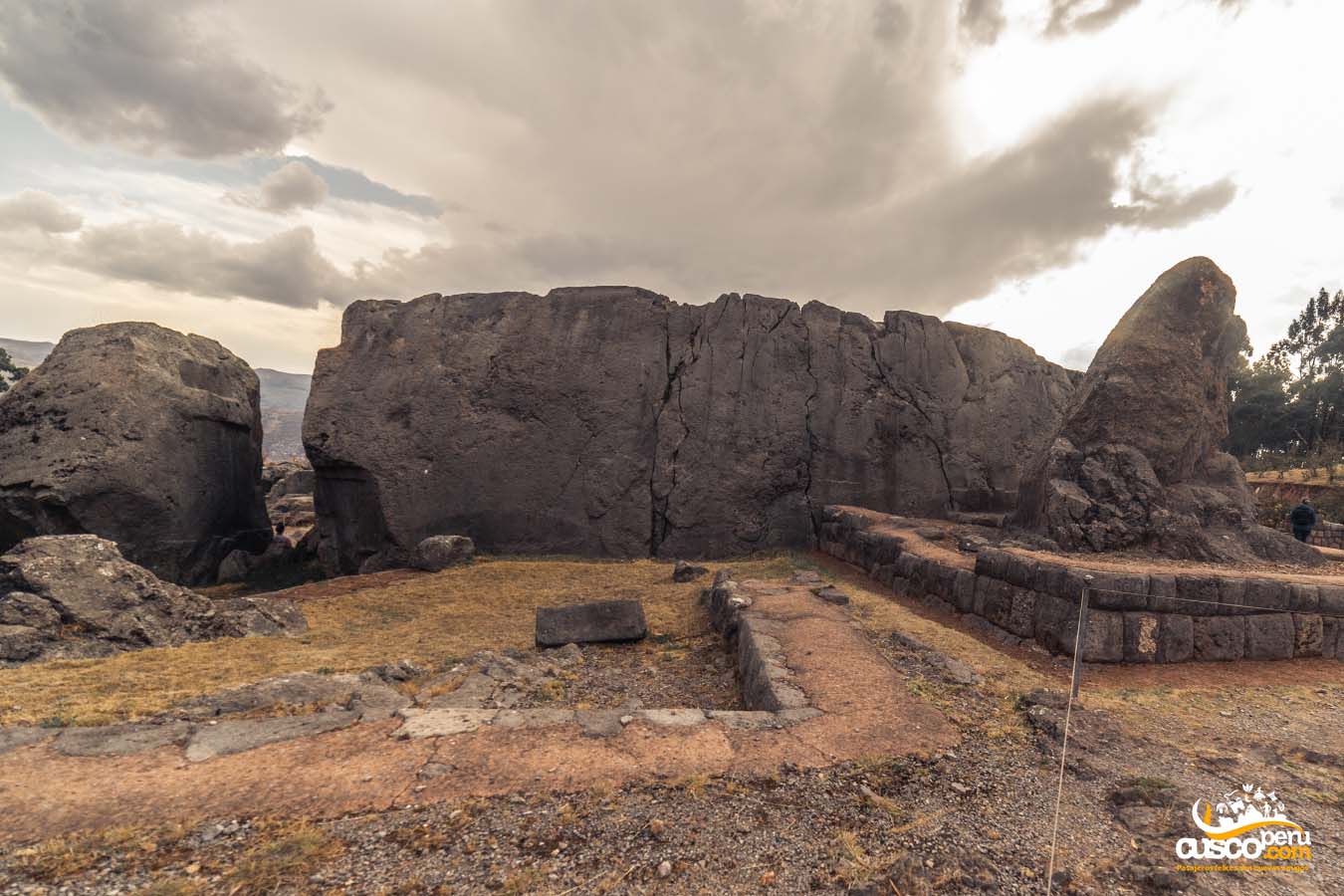
[lwptoc]
Table of Contents
The translation of the word Q'enqo or Kenko would be "Labyrinth" alluding to the tunnels, passages, and underground channels that this place housed. It is believed that the Spaniards shaped the name of the place, calling it "Q'enqo" when traditionally in the Inca era it was known as "Q’inqu".
It is located on the outskirts of the city of Cusco, on the Socorro hill, at an altitude of 3580 meters, 5 km from the city center.

Q’enqo is entirely sculpted in a natural rock formation, the religious significance of this site led to its destruction by the Spanish colony; however, being completely made of stone, it managed to withstand the attacks.
Inside, carvings of three important animals in the Andean cosmovision are found: the condor, the puma, and the snake.
It is composed of two main areas known as Q’enqo Grande, which is the larger rock formation, and a smaller rock, called Q’enqo Chico.
The sites we describe were undoubtedly very significant sanctuaries for the Incas. Despite the destruction this complex suffered during the colonial period, what can currently be seen within it is still impressive and colossal.
It is located at the top of the large rock, consisting of two cylindrical stone prominences that rise vertically on an almost elliptical pedestal, all carved at the top of the same rock.
The use of the intiwatanas (which would mean "where the sun is tied") during the Inca period is still an enigma. It is assumed to have been a kind of astronomical observatory, used by the amautas to measure time, establish the seasons, determine solstices and equinoxes, and also served as a shrine where worship was given to the Sun, Moon, and stars.
With the arrival of the winter solstice, the first rays of the sun fall precisely on this spot, forming a figure that resembles a puma with shining eyes.
It is an underground chamber, with floor, ceiling, walls, tables, and cupboards carved out of a single giant rock. It is said that this underground chamber could have been used for embalming the corpses of Inca nobles, as a place for human and llama sacrifices.
Being underground, it symbolized the entrance to the world of the dead.
Located on the large rock and very close to the Intiwatana. The zigzagging channel starts from a small hole and moves downward in an inclined plane and broken line, which then bifurcates, one of these branches led the liquid to the underground chamber or Sacrifice Room (according to the Cusco historian Víctor Angles). The liquid could have been consecrated chicha or the blood of beings sacrificed to the gods.
It is a huge semicircular area 55 m. long, with 19 incomplete niches distributed along the wall. During the Incanato, this place was a temple for public ceremonies. In front of the open area, there is a large 6 m. high stone block resting on a solid rectangular pedestal.
There are niches distributed around the amphitheater as seats, but according to recent research, it is very likely that they were actually the bases of a large wall, located in each of them, the representation of an entity to which worship was given.

The forest of Q’enqo is a must-see for photography enthusiasts and if you want to have a memory of your visit. Admission is completely free and it is located a few meters from the archaeological site.
The forest is made up of imposing eucalyptus trees that will leave you amazed. It is a unique and incredible place, which is why it was declared a World Heritage Site by UNESCO.
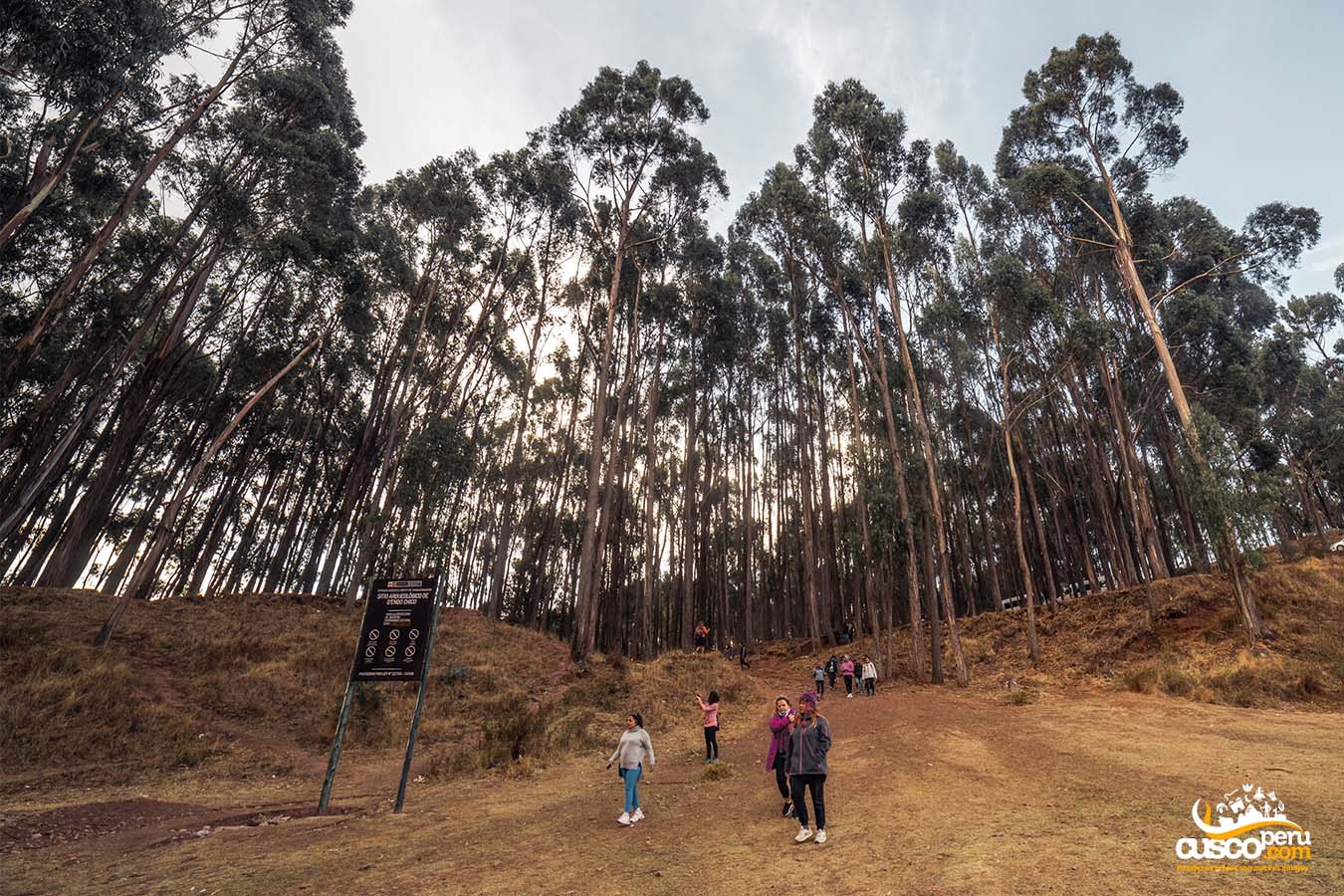
Monday to Sunday from 08:00 am to 05:30 pm.
The entrance fee is included in the Tourist Ticket.
Being located a few kilometers from the city of Cusco, Q’enqo can be reached in various ways:
Do you want to discover Q'enqo in a deeper and more enriching way? At cuscoPeru.com, we offer personalized tours that will allow you to discover the secrets of this impressive archaeological site, accompanied by expert guides who will explain its history, symbolism, and connection to other Andean cultures. Our tours also include visits to other fascinating sites in the Sacred Valley and Cusco, creating a complete and unforgettable experience. [Machu Picchu + Sacred Valley], [Machu Picchu + Rainbow Mountain]
Image Gallery


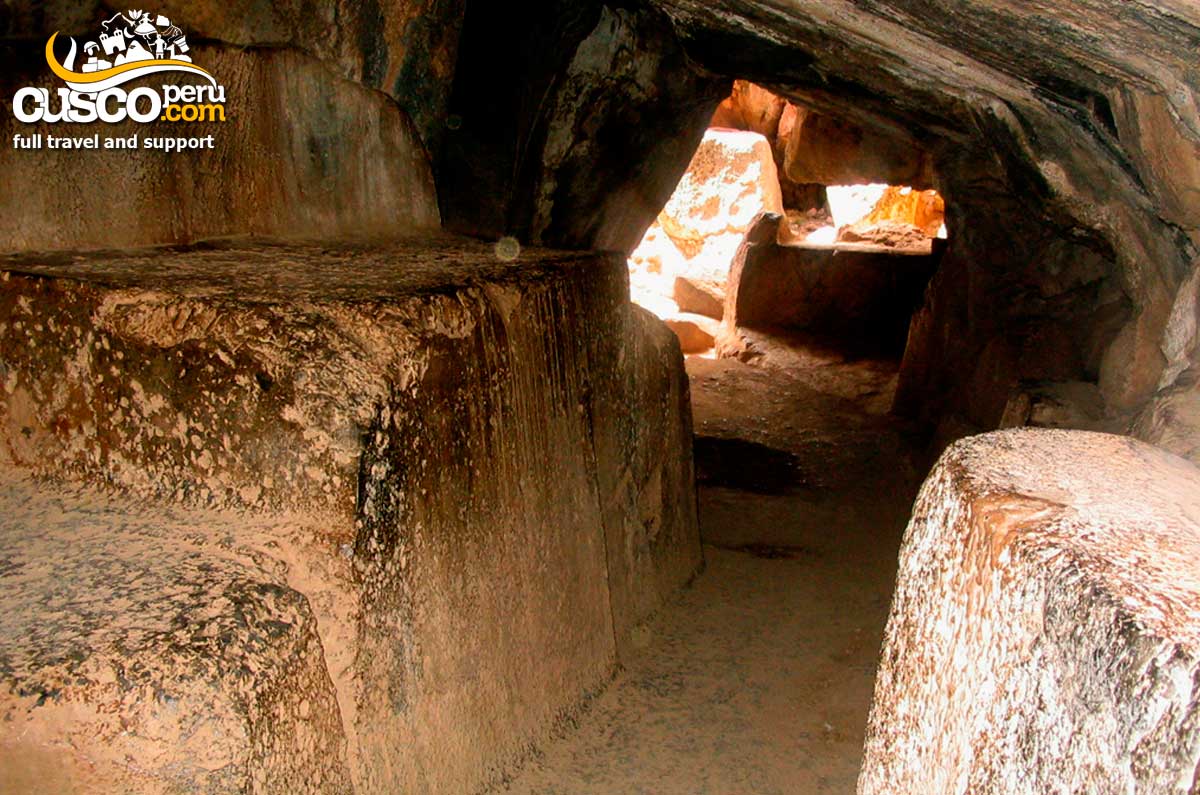
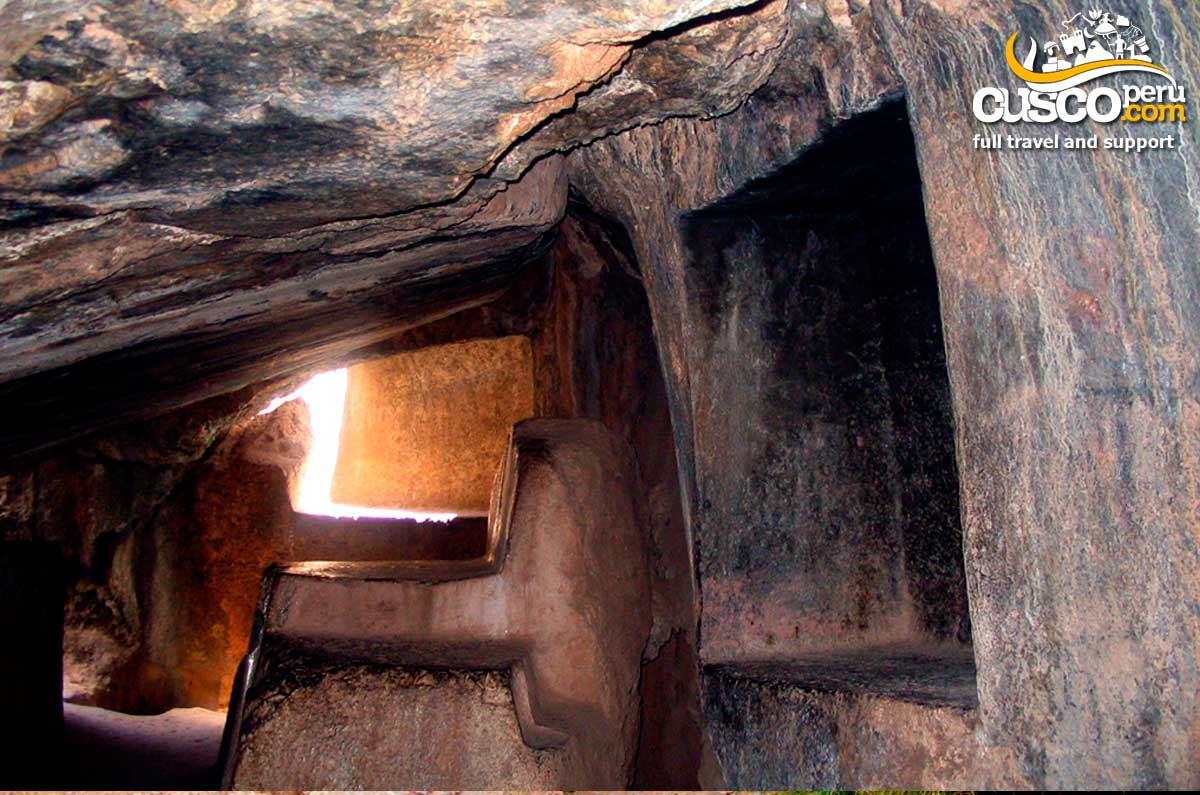
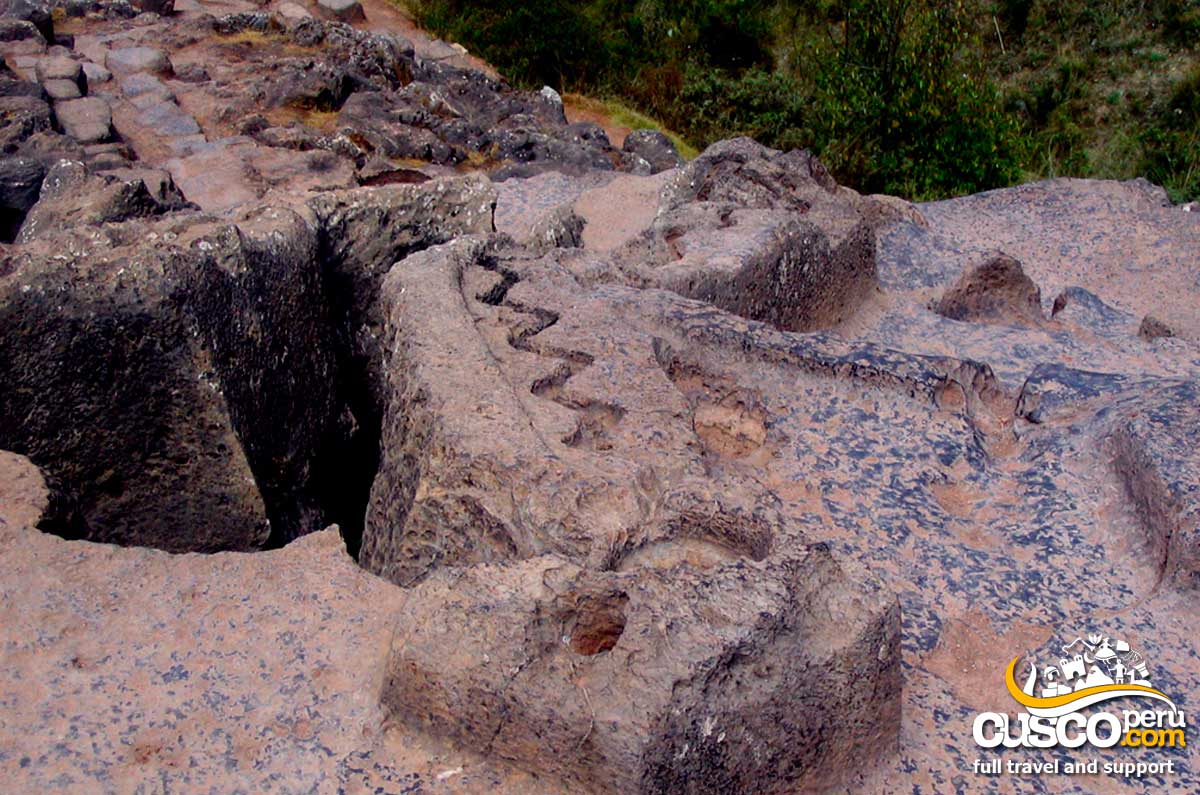
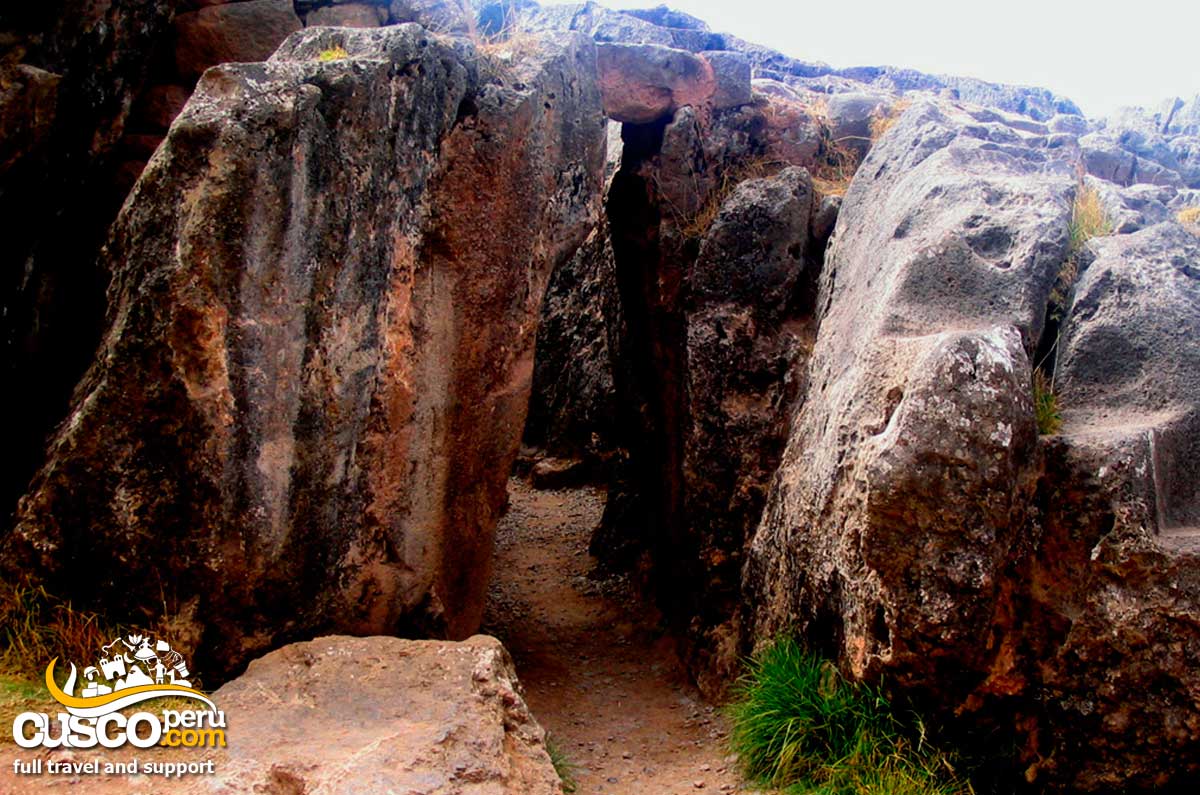

Happy passengers